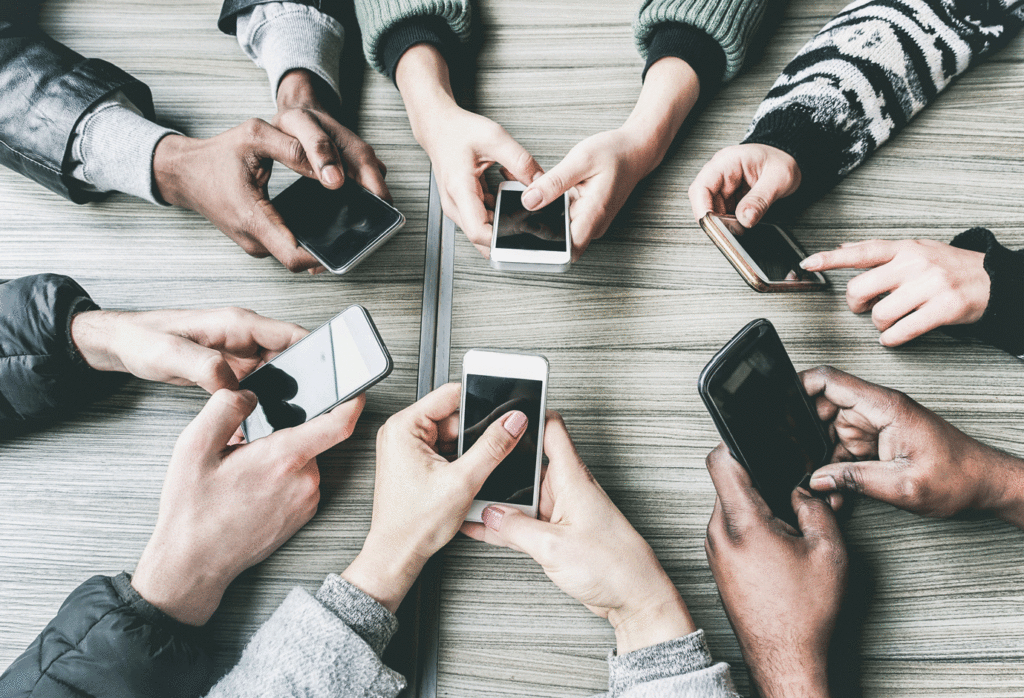Using Technology in Communications
Communication Series
with Carol Linden of Effective With People, LLC
Communication: The Trouble with Technology
Technology causes all sorts of problems when any two people try to understand or be understood in a communication. That said, technology is here to stay and we can’t function without it, so let’s learn the drawbacks and see what we can do to prevent technology being part of the problem.
Why technology poses a problem:
We unconsciously pick up on all sorts of non-verbal cues when we communicate face-to-face. We’re not even conscious of most of them but they are crucial to understanding the other person’s intention. And that affects how we take what they say. If someone is being genuine, in person we’d probably pick up on that, but in an email it’s so easy to miss those clues and mistakenly think someone is being sarcastic.
Even if someone is naturally somewhat curt and uses few words, their tone and facial expression can make that completely OK. My step-father was a man of few words but his “man of few words” style was seldom misunderstood because he had a non-judgmental tone and facial expression and a gentle voice.
The key is to put as many of those clues into our communications as we can to help prevent misunderstandings. Let’s look at how to handle the specific challenges caused by phone calls (does anyone talk on the phone any more? 8-), emails, and texting.
Chris here: So most everyone is required to take a public speaking class in college and I still see a great value in non-verbal communication. The statistics tell the truth that most communication is first visual, second is tone, and then comes actual words. This is the reason I like to do as much serious communication in-person with those I lead and those that supervise me.
Phone Calls:
You’re missing out on all the body language and facial expression that can be so crucial to picking up on the other person’s intentions. I know this will sound silly to some, but smile when you talk on the phone. Yes, testing has shown that people can hear a smile. They can hear it in your voice. You can prevent coming across as emotionally flat (which is hard to read) or as angry or annoyed.
Also, if you are annoyed or upset about something, you may need to say that to prevent it bleeding over unintentionally into what you’re saying. I’ve actually said to someone on the phone, “Look, I’m kinda upset about something right now, but it has nothing to with you. Just didn’t want you to misinterpret that I’m upset with you.”
If you need to get off the phone quickly for some reason, don’t just end the call abruptly, be transparent, explain why. For example, a friend was talking to my mother on the phone in the Mad Hatter the other day. She was finding it hard to hear, so abruptly said, “OK, I’m handing it back to Carol now. Bye.” Afterward she said, “Be sure to apologize to you mother for me. Tell her I only rushed her off the phone because it was hard to hear in the café.” Now, imagine the person on the other end of the call, being broken off with abruptly with no explanation. What would you be thinking? Feeling? To prevent such misunderstandings, just be really transparent. “Hey, it’s really hard to hear where I am. Can we touch base later?” or “I’ll call you when I’m in a quieter location.” See? That’s not hard. Being transparent can go a long way toward preventing misunderstandings.
Chris here: Honestly this is where I need to make the most progress in my communication. I’m such a doer and my desire is to make the decision and move on. I fail to recognize that better and more efficient communication is the better way rather than just getting it out there. I now recognize as I grow in communication that others are different from me and that’s good. I need to be willing to bend my preferred style to those around me for the greater benefit of the team.
Emails:
Oh, where do I start? At least with the phone you have the tone of voice to help you. With email, even that is gone. First off, if you are directive in your tone, that is only heightened in emails. While your voice might sound alright so they would not misunderstand if they could hear you, in an email, being too direct can sound like you’re “barking” at the other person. How likely is it that someone who feels “barked at” every time they open an email from you wants to engage with you?
Every time they feel “barked at,” you are making a withdrawal from the emotional bank account (to borrow Covey’s great metaphor) you have with that person. Covey says that to preserve a relationship with someone, you have to make 7 deposits (i.e., positive interactions) for every withdrawal you made (i.e., when you convey something negative.) Since that’s the case, don’t waste any of those accidentally by sending a curt email that seems to bark at them. Soften it. Let them hear your friendly intention on the other end.
First, set the context quickly,
“I’m just pinging you about the pre-game meeting tomorrow.”
Then follow with a request.
“Please make sure you bring the extra equipment we talked about yesterday.”
I like to end with something friendly and helpful like,
“Let me know if you need anything else from me.”
See? Not gushy, not too warm and fuzzy. Just straightforward, but not clipped. This sounds respectful and positive. Just the effect you want to have in that email with a peer.
Final tip: unless you’re cheering about something REALLY, REALLY positive, go easy on the CAPS and CAPS BOLD and the !!!!!!!’s. They can sound like “beings shouted at on paper.” LOL! Or, I guess now it’s really “being digitally shouted at.”
Texts, where do I start?
We can’t do without texting. Most of us probably use it more than phone or email these days. It’s even more problematic than email because it sounds clipped and curt by nature. When typing with your thumbs, it’s even more burdensome to add those extra words and phrases that convey good intention and friendliness. So, what do we do?
First, don’t try to convey anything terribly important or emotional in a text. Just use it for small things like touching base, checking in. “I’m at the side door. You here?” Anything that requires a conversation, pick up the phone. I know the phone is in your hand but use it as a phone and talk to the person. Now they can at least hear your tone so you don’t come across as curt as when typing with your thumbs.
Remember to say thanks, probably as “Thnx”. It’s a small thing but goes a long way. At least the message ends with appreciation.
As much as I’m afraid some of you will cringe at my recommending a few emoticons, I’m going to. Psychologists have noted that they do add some of the missing emotional pieces of information and are helpful in that way. Now, I’m not asking you to turn into a 14-year-old girl texting her friends. I’m just suggesting a few small, helpful things. For example, put a wink when you’re making a joke: ;-> or ;-). Put a smile at times to convey friendly intention. If you want to express frustration with what you’re going through, not with them, use the crossed eyes one: One I use more than any now is the thumbs up one, in email and in FB and in texting. It’s a one character way to convey many different things, but all positive and all encouraging. Anything from “you’re doing great” to “I’m on your side.” It’s all good with a “thumbs up” emoticon.
Again, remember about the CAPS and the !!!!!’s. Unless you’re cheering about something positive, go easy with those. They can have shouting implications. Remember.
In general just remember that technology contributes to misunderstandings by leaving out the normal cues they’d be getting from your facial expression and body language that “things are good between us.” So, use extra information in email and be transparent wherever necessary to prevent one of those classic misunderstandings.


Carol A. Linden
Effective With People, LLC
“playing well with others is good business”
919 599-9301
The JOB SEEKERS GUIDE for Extraverts and Introverts
is available on Amazon now, paperback and Kindle.

